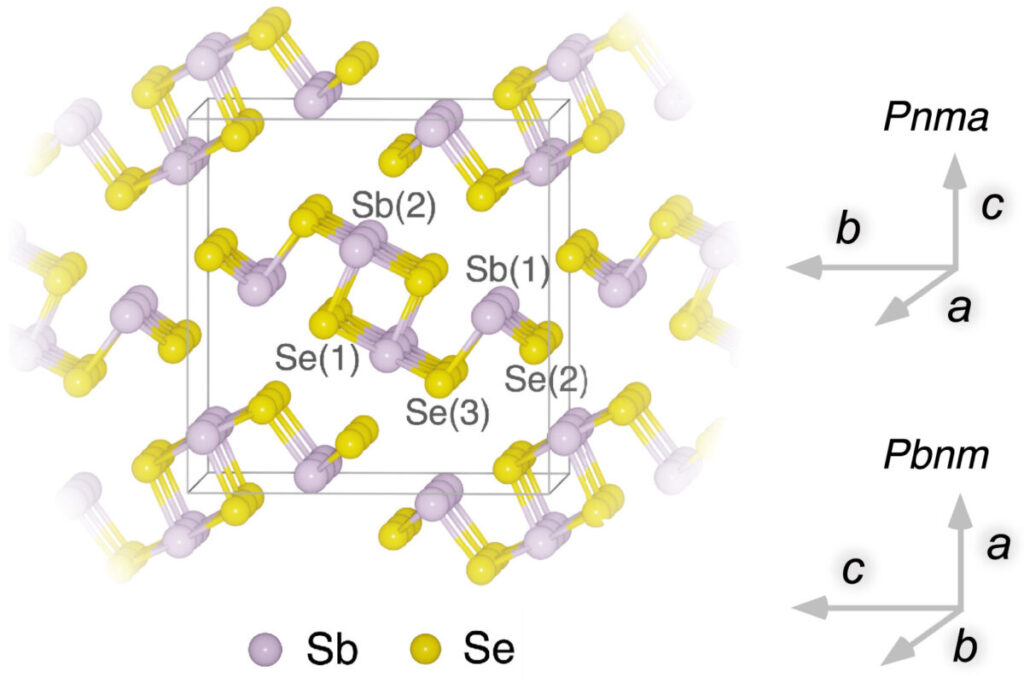New research from the UK sees potential to double the efficiency of antimony selenide absorbers, beyond the current champion cells by 10%, by applying the latest growth methods, reducing vacancy concentrations and material optimisation.
A group of researchers led by Imperial College London conducted a study to determine the upper limit of the conversion efficiency in solar cells based on antimony selenide (Sb2Se3) absorbers and has found that these PV devices have the potential to achieve nearly 26% efficiency.
Zb2Se3 is a p-type inorganic semiconductor with a one-dimensional crystal structure and a direct band gap in the range of 1.2 eV to 1.9 eV. It has excellent optoelectronic properties. In recent years, it has also been used as an absorbent material to build solar cells. The efficiency achieved by such devices is between 5% and 9.2%.
These efficiency levels are still present far behind those of other thin-film technologies, such as cells based on copper, indium, gallium and selenide (CISG), cadmium telluride (CdTe), kesterite (CZTSSe) and amorphous silicon (a-Si). This technology gap may depend on the fact that features such as mobility, carrier lifetime, diffusion length, defect depth, defect density and band tail remain largely unknown to the scientific community for the Sb2Se3 cell technology, as not many of these types of devices have been manufactured to date.
“Our goal is to use quantum mechanical simulations to predict whether a material is worth pursuing and whether a technology is worth optimizing,” the study’s lead author Aron Walsh said. pv magazine. “Sb2Se3 solar cells have achieved an energy conversion efficiency of approximately 10%. We show that although intrinsic defects can mediate nonradiative electron–hole recombination, the voltage losses can be minimized using selective growth conditions. This selenide is predicted to deliver up to 26% efficiency.”
Walsh is optimistic about using this material in single-junction solar cells and integrating sulfur to produce wider bandgap materials suitable for tandem solar cells. “With continued research and optimization, we hope significant progress can be made over the next decade,” he added.
In the study “Upper efficiency limit of Sb2Se3 solar panels,” published in Joulethe The British research group initially investigated the intrinsic point defects in Sb2Se3 solar cells and then used basic systematic calculations to assess their non-radiative carrier capture processes.
It specified that the upper limit for the conversion efficiency in Sb2Se3 can be predicted by considering both radiative and non-radiative processes in the bulk material, and acts as a quantitative measure of defect tolerance. It also noted that high efficiencies can be achieved under intermediate growth conditions that minimize vacancy concentrations in the devices.
Popular content
“Our focus is on the underlying chemistry and physics, and I will leave the techno-economic analysis and life cycle analysis to the experts,” Walsh said when asked about the production costs of Sb2Se3-based devices.
“However, there is a clear potential advantage over systems such as CdTe, which contain less durable elements. Sb2Se3 has the potential to compete with other thin film technologies as well as crystalline silicon, especially due to its growing efficiency and the use of ultra-thin absorber layers that provide new opportunities for building integrated and flexible solar photovoltaics,” he concluded.
This content is copyrighted and may not be reused. If you would like to collaborate with us and reuse some of our content, please contact: editors@pv-magazine.com.

